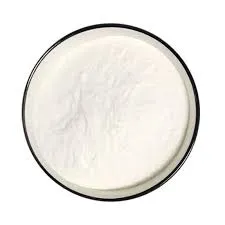
9-р сар . 25, 2024 13:26 Back to list
Exploring the Chemical Structure and Applications of Hydroxyethyl Cellulose in Industry
Hydroxyethyl Cellulose An Overview
Hydroxyethyl cellulose (HEC) is a water-soluble polymer that belongs to the family of cellulose ethers. It is derived from natural cellulose, which is abundant in plant cell walls. The chemical formula for hydroxyethyl cellulose can be denoted as (C2H4O)n, where n represents the degree of polymerization that reflects the number of repeating units in the polymer chain. This unique structure contributes to its wide range of applications in various industries, including pharmaceuticals, food, cosmetics, and construction.
Chemical Structure and Properties
The molecular structure of HEC features hydroxyl (–OH) groups that are introduced through the hydroxyethylation process. This modification not only enhances the solubility of cellulose in water but also improves its thickening and emulsifying properties. The degree of substitution and the molecular weight of HEC can be tailored during the production process, allowing manufacturers to customize its rheological properties for specific applications.
One of the hallmark features of hydroxyethyl cellulose is its ability to form gels and maintain viscosity across different concentrations. This makes it particularly useful as a thickener, stabilizer, and film-forming agent. Additionally, HEC displays excellent water retention properties, thus playing a critical role in enhancing the texture and consistency of various formulations.
Applications of Hydroxyethyl Cellulose
1. Pharmaceuticals In the pharmaceutical industry, HEC serves as a viscosity-enhancing agent in the preparation of topical creams, gels, and ointments. Its biocompatibility and non-toxicity make it an ideal choice for drug delivery systems.
hydroxyethyl cellulose chemical formula

2. Food Industry HEC is extensively used as a food additive due to its thickening and stabilizing properties. It helps improve the texture of sauces, dressings, and dairy products by providing a smooth and creamy consistency.
3. Cosmetics and Personal Care In the cosmetics sector, hydroxyethyl cellulose is utilized in various products, including shampoos, conditioners, lotions, and gels. It enhances the spreadability and application of these products while also acting as a humectant to retain moisture.
4. Construction HEC finds significant applications in the construction industry, where it is used in the formulation of cement-based materials and additives. It improves workability, extends drying times, and contributes to better adhesion in tile adhesives, joint fillers, and mortars.
Environmental Impact and Safety
As a derivative of natural cellulose, HEC is generally recognized as safe (GRAS) for use in food and pharmaceutical products. It is biodegradable and has a minimal environmental impact compared to synthetic polymers. This sustainability aspect enhances its attractiveness as a material in today’s eco-conscious market.
Conclusion
In summary, hydroxyethyl cellulose is a versatile and essential ingredient across multiple industries, driven by its unique chemical properties and adaptability. With ongoing research and innovation, the potential applications of HEC are continuously expanding, making it a focal point in product formulation and development strategies. As industries shift towards more sustainable practices, the role of natural derivatives like HEC will undoubtedly become more significant, highlighting the need for a deeper understanding of its properties and applications.
-
Versatile Hpmc Uses in Different Industries
NewsJun.19,2025
-
Redispersible Powder's Role in Enhancing Durability of Construction Products
NewsJun.19,2025
-
Hydroxyethyl Cellulose Applications Driving Green Industrial Processes
NewsJun.19,2025
-
Exploring Different Redispersible Polymer Powder
NewsJun.19,2025
-
Choosing the Right Mortar Bonding Agent
NewsJun.19,2025
-
Applications and Significance of China Hpmc in Modern Industries
NewsJun.19,2025







